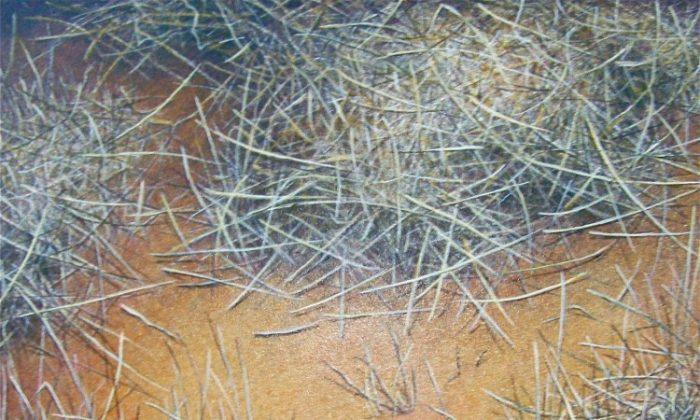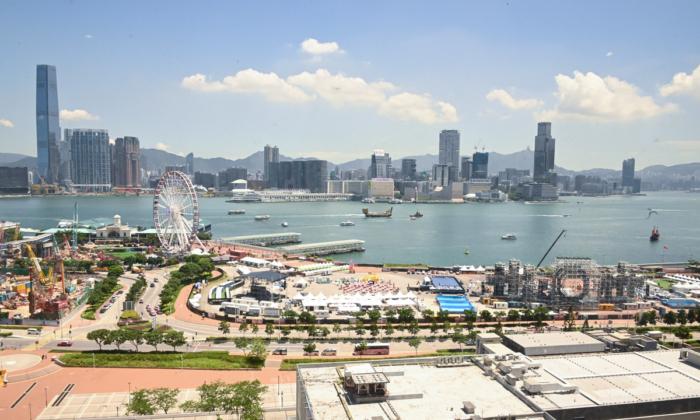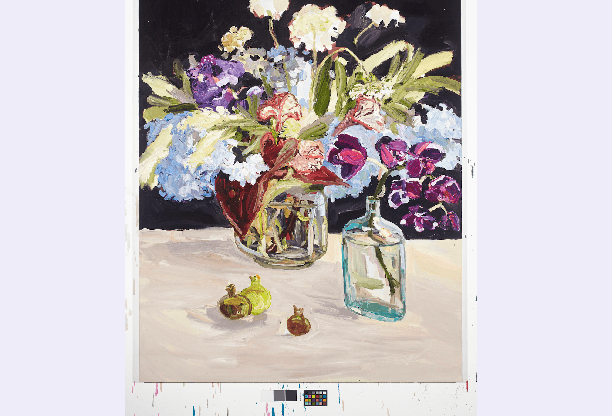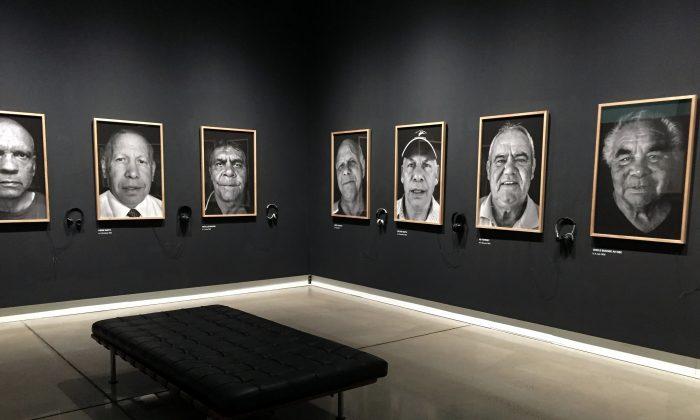Australian Israeli-born artist Hanna Kay has again chosen Sydney’s Wilson Street Gallery to exhibit her beautiful and thought-provoking artwork in an exhibition titled Circularity.
A realist painter with a unique vision, Kay has exhibited in major art capitals of Europe and the United States, but over the last two decades has made Australia home, with exhibitions around the country.
Her last exhibition in Sydney, titled Waterways, took place in 2009, also at the Wilson Street Gallery.
Living in the upper regions of the beautiful Hunter Valley, Kay draws inspiration from her immediate natural surroundings. Using natural objects of twigs, clusters of grass, puddles, and branches, many of her artworks focus on the effects and changes on objects caused by the passage of time.
Kay said that her recent project Circularity was inspired by a trip to the desert surrounding Alice Springs.
“In the desert when you stand there and everything is still ... [it] sort of looks ageless, but at the same time, I started noticing that as I’m standing there and in awe of what I’m seeing, change is happening,” Kay said in a video posted on her website about her exhibit Circularity.
“The weather will grind boulders into rocks, and then the rocks into sand, and then over time, the sand becomes sandstones again,” she added in the video.
Sharing her love for all things circular, she wrote in the Art Quarterly No. 15, issued by the Wilson Street Gallery, “It seems that there isn’t a shape in nature that affects me like the circle or the circular.”
She gave examples like a “stalk blowing in the wind forming a circle-like shape in the sand” and a “pile of gathered leaves, trapped by the wind, whirling just above the ground.”
Kay’s interest in circular abstractions is transformed into profound metaphors. She wrote: “The idea of concave/convex intrigues me. The very same line that creates concave automatically creates convex; two opposites, each existing by virtue of the other.”
While most people tend to connect to a place through the people and culture, Kay said in the video that her connection is “through the landscape and the natural environment.”
Accordingly, Kay’s artwork is remarkably lifelike, possessing what she described as a “sort of European sensibility.” This she credits to her years of schooling in Vienna, where she was taught the styles and techniques of the Old Masters.
No Ambiguity
Commenting on her latest exhibition, artist and neurologist Dr. Ross Mellick wrote in the same Art Quarterly edition, “The works are realistic in so far as there is no ambiguity of subject matter: grass is grass, twigs are twigs, and sand is sand.”
“The opaque white tempera which she layers meticulously assists to define the shape of the forms in her paintings,” he further wrote, adding: “But, more importantly, it reflects light which, in turn, is modulated by layer upon layer of partly transparent oil paint, creating with great subtlety light effect and colour tones, as in nature.”
By combining these traditional techniques with her own, Kay’s sensual canvases seek to enrapture her audience, drawing the visitor into a different sense of reality and of place.
Despite her close affiliation with her natural surroundings, she does not perceive herself as a landscape artist, but rather sees her use of the natural environment as a “vehicle by which I explore certain ideas and interest,” according to the same video.
Migrant Experience
Alongside the success of Circularity, Kay has drawn unprecedented attention and acclaim from several prominent regional New South Wales (NSW) art galleries with the undertaking of a major historical survey exhibition entitled Undertow.
On this occasion, Undertow continues to explore her fascination with the wear and tear of time, of nature, and the seasons in a small forgotten Jewish cemetery of some 50 graves in NSW dating back to the 1840s.
Through her artwork, Kay has restored the relevance and historical significance of the migrant experience in rural Australia.
Though reluctant to accept the proposal at first, as a Hebrew migrant herself, Kay was intrigued by the abandoned tombstones.
It hit her that the names that are inscribed on the gravestones are Hebrew names and English names, she said in another video on her website, which “moved me to decide to do this project.”
“I have done a very similar journey to them. I came also from that side of the world, and I ended up in the Hunter, and they ended up in the Hunter. It’s very surreal,” Kay said.
As mentioned in the gallery’s Art Quarterly, Kay holds degrees in Fine Arts (Israel and Austria) and Semiotics at the University of Sydney. She was a finalist in the Kedumba Drawing Award and the Dobell Prize for Drawing at the Art Gallery of NSW and was the recipient of the Norvill Landscape Art Prize and the Muswellbrook Art Prize in 2009.
Circularity will continue to run at Wilson Street Gallery, Sydney, until the Oct. 15. For more information please visit www.wilsonstreetgallery.com.au.





